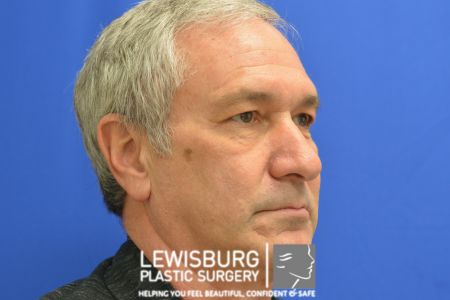Eyelid Lift
The skin of the eyelids is very thin and delicate, making it particularly susceptible to aging signs including wrinkles and drooping. In some cases, damage, drooping, and excessive skin in the eyelids can even interfere with vision as the skin blocks part of a patient’s field of vision. In addition, puffiness can occur due to deposits of fat in the upper or lower eyelids, causing the appearance of tiredness or age. An eyelid lift is a surgery designed to address these issues. Eyelid lifts are also known as blepharoplasty. In addition to creating a more youthful and alert appearance, some patients can even improve their eyesight through an eyelid lift. At Lewisburg Plastic Surgery in Lewisburg, PA, our plastic surgeons may also recommend pairing an eyelid lift with procedures such as a forehead lift, facelift, or skin care treatments to complement the results.
Is an eyelid lift right for me?
An eyelid lift is a suitable procedure for both men and women who notice visible signs of aging around the eye area. This can include:
- Loose or sagging skin in the eyelids
- Folds or hooding of the upper eyelid
- Impaired vision due to excessive sagging skin
- Fatty deposits resulting in a puffy or tired appearance
- Bags below the eyes
- Excess wrinkles or fine lines
Prior to your eyelid lift surgery, you will have a thorough consultation to review your goals for the procedure as well as your health history. Eyelid lifts are only suitable for patients who are generally healthy. This includes careful consideration of eye health. Your plastic surgeon will likely require you to have a checkup with an ophthalmologist. This will also help to determine whether drooping skin is causing any vision loss.
Because an upper eyelid lift can remove droopy skin that can impair vision, your insurance provider might cover it, but only if a visual field test can determine that the degree of excess skin moderately inhibits your peripheral vision.
Podcast Episode: Eyelid Lift Procedure
As we age, the skin above and below the eye can become stretched, and the eyebrow can descend a bit, causing some extra skin to developer in the upper eye area.
An eyelid lift – also known as blepharoplasty – can be performed on either an upper or lower eyelid to help patients with these issues.
More Podcast EpisodesHow is an eyelid lift performed?
Eyelid lifts are outpatient surgeries that can be performed under IV sedation and local anesthesia. Incisions in an upper eyelid surgery are made at the natural crease of the eyelid, while those for a lower eyelid surgery are made below the lower lash line. Through these incisions, excess skin and fat are removed and the muscles and other tissues are repositioned as needed to reduce drooping and wrinkles. Once a more youthful position and appearance is achieved, the incisions can be closed using sutures.
Recovery after an eyelid lift
As an eyelid lift is an outpatient procedure, patients can return home with a trusted friend, family member, or other caregiver to drive them. Light sensitivity is normal, so patients are typically advised to wear sunglasses on their trip home. This sensitivity, as well as general tenderness, may persist for one to two weeks. Patients will be instructed to use prescription eye drops as they heal from the procedure. Any sutures can be removed within about four to six days of the surgery. Swelling and bruising will resolve about two weeks after the surgery, though some residual swelling may linger. Most patients feel comfortable wearing makeup when sutures are removed and contact lenses about seven to ten days post-op.
Insurance Guidelines
Eyelid lifts are occasionally covered, in full or in part, by health insurance. This applies to upper blepharoplasty surgeries that are determined to improve the patient’s vision by removing drooping skin that interferes with the visual field. If this is not the case, the eyelid lift is considered cosmetic and therefore not covered by insurance.









